
伤口世界
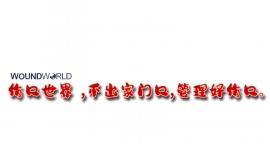
- 星期二, 07 5月 2024
中医药治疗湿疹的研究近况
文章编号:1672-7134(2022)07-0741
中图分类号:R275.9 文献标识码:B DOI:10.16448/j.cjtcm.2022.0741
彭定玉,梁景辉,胡恩宜,杨焕连,刘倩华
广西钦州市中医医院 广西钦州 535019
摘要 湿疹是皮肤科临床常见疾病,目前现代医学对于湿疹的治疗日趋成熟完善,但长期使用西药治疗仍存在一定不良反应。而中医药治疗湿疹历史悠久、经验丰富,可有效改善临床症状、延缓病情发展,具有较好的疗效与安全性。近年来湿疹的中医药治疗研究取得了长足的进展,该文通过文献回顾,从中医药内服、中医药外洗、中成药、中医药提取物方面进行总结,探讨中医药治疗湿疹的临床疗效及作用机制,从而为临床诊疗提供参考。
关键词 湿疹;中医药;综述
Research Status of Traditional Chinese Medicine in the Treatment of Eczema
PENG Dingyu, LIANG Jinghui, HU Enyi, YANG Huanlian, LIU Qianhua
Guangxi Qinzhou Traditional Chinese Medicine Hospital, Guangxi Qinzhou 535019, China
Abstract Eczema is a common clinical disease in dermatology. At present, the treatment of eczema in modern medicine is becoming more and more mature and perfect, but there are still some adverse reactions in the long-term use of western medicine. Traditional Chinese medicine has a long history and rich experience in the treatment of eczema, which can effectively improve clinical symptoms and delay the development of the disease, and has good efficacy and safety. In recent years, the research on the treatment of eczema with traditional Chinese medicine has made great progress. This article will review the literature and summarize the aspects of oral administration of traditional Chinese medicine, external washing of traditional Chinese medicine, proprietary Chinese medicine, and extracts of traditional Chinese medicine, and discuss the clinical efficacy and role of traditional Chinese medicine in the treatment of eczema. mechanism to provide reference for clinical diagnosis and treatment.
Keywords Eczema; Traditional Chinese medicine; Review
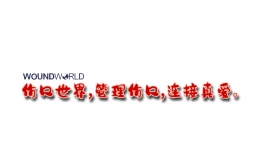
- 星期一, 06 5月 2024
面部埋线提升术后6年出现排线反应1例
黄思琪1,2 于波1 陈办成1
北京大学深圳医院皮肤科,深圳 518035;2安徽医科大学北大深圳医院临床学院,合肥
230032
通信作者:陈办成,Email:该Email地址已收到反垃圾邮件插件保护。要显示它您需要在浏览器中启用JavaScript。
基金项目:深圳市医学重点学科建设(SZXK040)
DOI:10.3760/cma.j.issn.1671-0290.2023.06.021
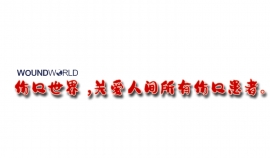
- 星期日, 28 4月 2024
螺旋状脐畸形矫正1例
夏清 朱帧 赵煜韬
浙江省宁波市北仑区滨海新城医院整形科,宁波 315830
通信作者:夏清,Email:该Email地址已收到反垃圾邮件插件保护。要显示它您需要在浏览器中启用JavaScript。
DOI:10.3760/cma.j.issn.1671-0290.2023.03.019
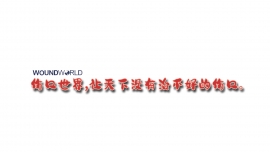
- 星期五, 26 4月 2024
聚丙烯酰胺水凝胶注射隆乳术后并发胸腔内凝胶移位1例
张庆雪 张莹莹 高东程 赵硕 李靖若
郑州大学第一附属医院乳腺外科,郑州 450052
通信作者:李靖若,Email:该Email地址已收到反垃圾邮件插件保护。要显示它您需要在浏览器中启用JavaScript。
DOI:10.3760/cma.j.issn.1671-0290.2023.02.023

- 星期四, 25 4月 2024
755nm 翠绿宝石皮秒激光治疗口唇部位色素痣1例
任荣鑫 赵红艺
北京医院整形外科 国家老年医学中心 中国医学科学院老年医 学 研 究 院,北 京
100730
通信作者:赵红艺,Email:该Email地址已收到反垃圾邮件插件保护。要显示它您需要在浏览器中启用JavaScript。
DOI:10.3760/cma.j.issn.1671-0290.2023.03.020
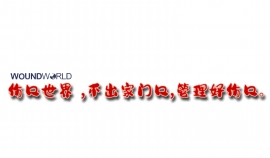
- 星期三, 24 4月 2024
Statin heart benefits outweigh diabetes risks
Treatment with high-intensity statins, such as atorvastatin 20 mg upwards, results in a 36% proportional increase in new type 2 diabetes diagnoses compared to placebo, with the majority of the new diabetes occurring in people already close to the diabetes glycaemic threshold, according to this meta-analysis of participant-level data from the Cholesterol Treatment Trialists’ Collaboration published in The Lancet Diabetes & Endocrinology. A smaller 10% proportional increase occurs with low- or moderate-intensity statins. Although previous meta-analyses of summary data from the statin trials have highlighted this increased risk, they could not fully quantify the size and timing of increases or determine who is at greatest risk. People with pre-existing diabetes treated with statins are also at risk of worsening glycaemia, particularly with high-intensity statins. However, the benefits of statins in reducing cardiovascular events in those at high risk far outweigh the impact of these increases in incident type 2 diabetes, so this study should not change prescribing habits. Nonetheless, it reminds us of the importance of counselling regarding increasing glycaemia risk and of encouraging lifestyle discussions around weight, eating patterns, sleep and physical activity, which can not only reduce the risk of type 2 diabetes but also improve the cardiovascular risk the statin is being used to treat.
Pam Brown
GP in Swansea
Citation: Brown P (2024) Diabetes Distilled: Statin heart benefits outweigh diabetes risks. Diabetes & Primary Care 26: [Early view publication]
